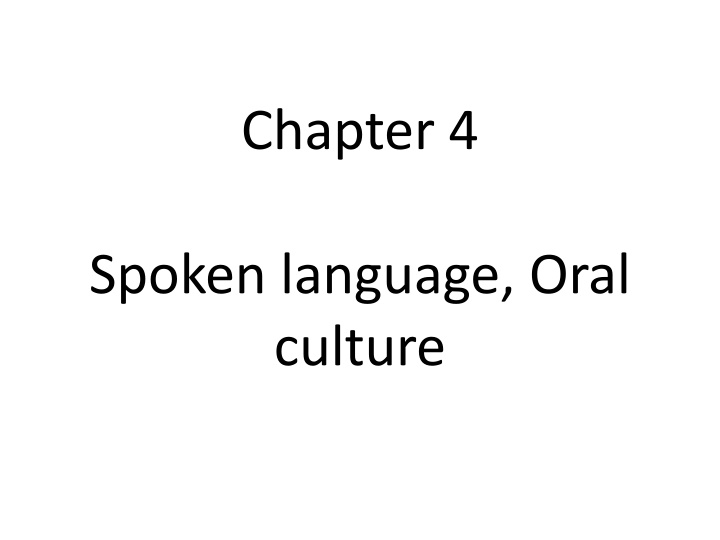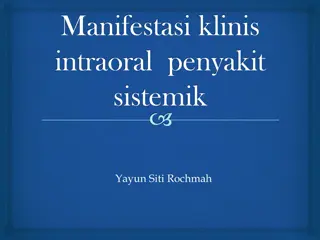
Characteristics of Conversational Speech in Oral Culture
Explore the seven distinctive features of conversational speech in oral culture, including its transient nature, additive structure, redundancy, and more. Understand the cultural matrix of language and how conversational style varies based on contexts and situations.
Download Presentation

Please find below an Image/Link to download the presentation.
The content on the website is provided AS IS for your information and personal use only. It may not be sold, licensed, or shared on other websites without obtaining consent from the author. If you encounter any issues during the download, it is possible that the publisher has removed the file from their server.
You are allowed to download the files provided on this website for personal or commercial use, subject to the condition that they are used lawfully. All files are the property of their respective owners.
The content on the website is provided AS IS for your information and personal use only. It may not be sold, licensed, or shared on other websites without obtaining consent from the author.
E N D
Presentation Transcript
Chapter 4 Spoken language, Oral culture
The Seven Characteristics of Conversational Speech 1. Speech is transient, rather than permanent. 2. Speech is additive or rhapsodic . 3. Speech is aggregative./ phatic communion 4. Speech is redundant or copious
5. Speech is loosely structured grammatically and is lexically sparse. 6. Speech tends to be people-centered, writing tends to be topic- centered. 7. Speech, being close to the situation at hand, is context dependent.
These seven features are not inherent (permanent) in the spoken or written medium. Orality and literacy have to be seen as a continuum use of both the spoken & written languages. E.g. emails/ memos (written in the orate mode/ informal style ) presentations/ lectures (spoken in the literate mode/ elevated style )
The cultural matrix of language as it is used in verbal exchanges 1) Indicating Status: - via words/ titles - clip #20 2) Social positioning - via intonation, pronunciation (footing) - code switching - cultural frame/ speech order - clip #22& 21 3) Protecting face - via order of speech & respect - example Japanese - clip #23 -
4) Conversational style - depends on contexts of situation/ culture - interview? Friendly? Silent? Loud? 5) Narrative style - via story telling - less details/ analysis vs. more






















